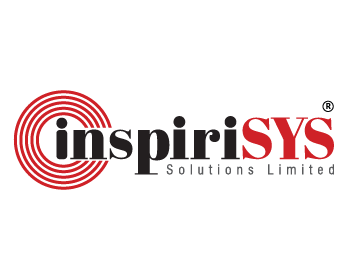Culture - This is one aspect that plays a pivotal role in the society. Human behaviour is hugely influenced by the culture they are exposed to and that transforms our personality.
Similarly, culture that reverberates in an organization, shapes its employees and determines their value as employees.
Culture is an amalgamation of a set of beliefs, values and practices. These are also applicable to an organization which follows certain values, beliefs, rules, practices and systems that form an organizational culture.
The culture followed in an organization must be welcoming, encouraging and driven towards bringing out the best in each one of them and allowing them to thrive well in a healthy environment. After all, who would want to be a part of a clumsy organization?
What is Organizational Culture?
Let us understand organizational culture with this example:
Picture a classroom, where students endure a rigid environment, which is devoid of meaningful decisions, sharing new insights, collaboration, transparency and a high level of engagement. The absence of signs of growth or progress is evident. Imposing extremely strict rules upon them hampers the students' ability to progress and succeed. This can potentially cause students to harbour resentment towards the class.
In an alternate scenario, picture another class that fosters a supportive culture and enhances the competitive spirit of the students. This class encourages group activities, knowledge sharing, and working towards shared goals while firmly believing in the values set by the class, allowing them to excel well and be eager to deliver their best.
The parallel between the classroom example and organizational culture becomes clear when we apply them to the workplace. In the best organizational cultures, employees have a clear sense of their role, align with the company’s vision and execute their work keeping the core values of the company in mind. This creates an environment where employees thrive fostering collective eagerness to deliver optimal performance.
Why is Organizational Culture important?
Organizational Culture plays a crucial role in every aspect of the business. From punctuality to etiquette, the tone of a contract to employee benefits, everything determines the organizational culture. When workplace culture and employees are on the same page, the employees feel valued, comfortable and supported by their organization. When culture and employees join hands, they can battle challenges that come their way.
Let’s first explore the red flags of an Organizational Culture.
Warning Alert!
Experts say that you can identify a toxic work culture by identifying certain red flags. It is easy to judge in which direction the organization is heading forth.

1. Choosing Good Enough Over Excellence
Have you always been wondering, why you have been excluded from winning appreciation and wards despite giving your 100% to your work? Then probably you need to look for the red flag there. When organizations choose only the top-level performers or the most visible leaders, despite their low social conduct and unethical behaviour - it sends a clear sign of toxicity in the organization.
2. Chronic Disengagement
Forced smiles and non-passionate ideas are strong signs of disengagement. Chronic disengagement among employees stands out as a major peril for an organization.
3. Gossip
Although there is always room for some fun in organizations, it is always safe to be mindful of what one blurts out. Gossip spreads fast and contains everything but the truth. If people are minding everyone’s business and ignoring theirs, then the organization’s reputation is in danger.
4. Toxic Leadership
If your leaders go by the phrase “promises are meant to be broken” then understand there is possibly nothing that you could gain there. Lack of transparency, haphazard updates or no updates about the organization impacts employees’ trust.
5. Gender Politics
The talent pool stagnates when merits take a backseat and chromosomes rule the foreground. Remember organizations must recognise and applaud people based on their calibre and not their gender.
6. No Shared Values
Unclear core values of the company, and lack of synchronization between the leadership circle and employees impact productivity and overall growth of the employees. Beware of culture without a compass, because it is leading you to a ‘no-where zone’.
7. Faulty Work-Life Balance
Words have no value unless represented through actions. Merely talking about work-life balance will not balance the lives of employees. If your phone pings late at midnight, or you find yourself working on a vacation, then understand you’ve lost your balancing game.
To see the positive change take root, leaders must become observers of the office surroundings and behaviour. This mindful analysis of the organization’s culture will exhibit progressive signs or regressive signs. Such dedication demonstrates the genuineness towards the well-being of the employees within the organization.
Qualities of a Healthy Organizational Structure
Organizational cultures are diverse, but the ultimate goal is to shape its people distinctly. However, it is important to seek these qualities from high-performing organizations. Here are some key points to consider.

Right attitudes blended with the right actions are the key ingredients to build a healthy culture within the organization.
Watch the video below to get insights into how leaders create engaging workplace cultures.
-
Aligned Vision and Goals
Employees connect with their organization when the company’s objectives and employee motivations strive to fall in one direction. When everyone works towards accomplishing the shared goals, the organization reaps greater benefits. Exceptional organizations strive to continuously align their vision, objectives and goals.
-
Celebrating every Victory
A note of thanks, public applause or a promotion for an excellent performance makes a huge difference for employees. Promoting a culture of appreciation is the healthiest sign of high-performing organizations.
-
Building Trust
Trust is a vital aspect of any organization. When working in a collaborative environment, team members must trust each other and lend support in challenging times.
-
Pursuit of Excellence
Business grows when there is an exceptional performance. Peers are the motivation drivers of a team. When each gets to learn from the other, eventually there is a good boost of self-esteem resulting in greater productivity and profitability.
-
Art of Resilience
Business needs change as per the modern landscape. Therefore, high-performing organizations accept and adapt to change effortlessly.
-
Team Work
Effective communication and collaborative spirit among team members aid in the smooth functioning of the team. High-performing organizations promote the spirit of working together having each other’s back and working in harmony.
-
Integrity
The principle of integrity contributes to the strength of the organization. It is a union of ethical conduct, moral values and conviction to do the right thing at the right time, even in the time of adversity.
-
Innovation Potential
Encouraging out-of-the-box thinking and risk-taking sparks breakthroughs and keeps the organization ahead of the competition.
-
Psychological Safety
It is important that employees freely express their concerns at the workplace. They must feel safe to voice out their opinions, disagreements and honest feedback, fostering a healthy environment and culture of continuous growth.
At Inspirisys, we uphold our organizational values, that promote collaboration, camaraderie, trust and respect for each other. We believe that the overall well-being of our employees plays a significant role in fostering a thriving culture. We prioritise our employees, therefore we ensure that they embrace and enjoy the best possible culture at the organization.

The recent McKinsey research identified the ten most significant shifts in organizations. These shifts give you insights on the dynamic technology landscape, well-being of employees, agility and answer various other complex questions. These insights can help you navigate the rapidly changing corporate landscape and stay ahead of the curve.
How To Build A High-Performing Organizational Culture
The willingness to transform for the better is the first step to building a positive organizational culture. Here are the key steps that will help you build a thriving culture.

According to Global Culture Study Report 2023, a thriving culture and a strong workplace can significantly impact an organization.
-
Lend an ear to your employees
If you believe in building a healthy workplace and nurturing a sense of community among your team members, then provide them the space to voice their concerns, opinions and inputs. When the employees’ inputs are valued and become part of decision-making, it will encourage them to take up various responsibilities and bring forth new initiatives.
Frequent employee surveys are another way to understand your employees more closely. Right actions taken after examining their feedback, are not only a great gesture but also strongly suggest that you value your employees genuinely.
Transparency is highly valued and, therefore, involves employees in planning and decision-making in one or the other form. Strengthening trust in the hearts of the employees enables them to stay loyal and committed towards the organization.
-
New Hires’ Compatibility with your Company’s Values
Some high-performing organizations use their culture to attract those whose values resonate with them. Working with such individuals as a team aids in smooth execution, yielding desired results and making growth visible. Mentoring becomes effortless, and creation and innovation take the charge.
It would be beneficial if organizations discuss their culture and values during the hiring stage; and have it included in the job postings and all aspects of the recruitment process.
-
Embrace Change
High Performing Organizational cultures bravely respond and adapt to new developments. They are not afraid to implement new methods and approaches that bring them an excellent workforce, increased productivity and impressive results. The pandemic stage is one great example of how strong functioning organizations embraced the change of remote work and later hybrid mode of working. As circumstances won’t always be in our favour, it is always safe to have foresight and be ready for the next change.
-
Focus on Learning and Development
Organizations must invest in learning and development opportunities for their employees. Encourage training and coaching initiatives; knowledge and skill sharing sessions among team members. Offering new responsibilities to the employee will help them comprehend new avenues, and expand their skill set for future responsibilities.
Conclusion
Organizational culture is a powerful weapon
a weapon that strengthens employee engagement, builds trust, fosters loyalty and enhances brand image and reputation, ultimately leading to remarkable customer success.
Organizations can only survive in the ever-changing market if they take the cultural aspect seriously. A positive work environment is a magnet to attract top talent. At Inspirisys, we are passionate about creating an environment that encourages positivity and growth and we truly understand its value and the impact it has on our people and our customers. We are committed to providing a top-notch experience to everyone we work with and find ways to enhance it.
So, why wait? Streamline your culture and the leadership team, communicate your well-defined values and your vision for the future and see the transformative power of organizational culture.
Seeking a workplace with a culture that stands out? Immerse yourself in a world of possibilities and start your journey with us.







